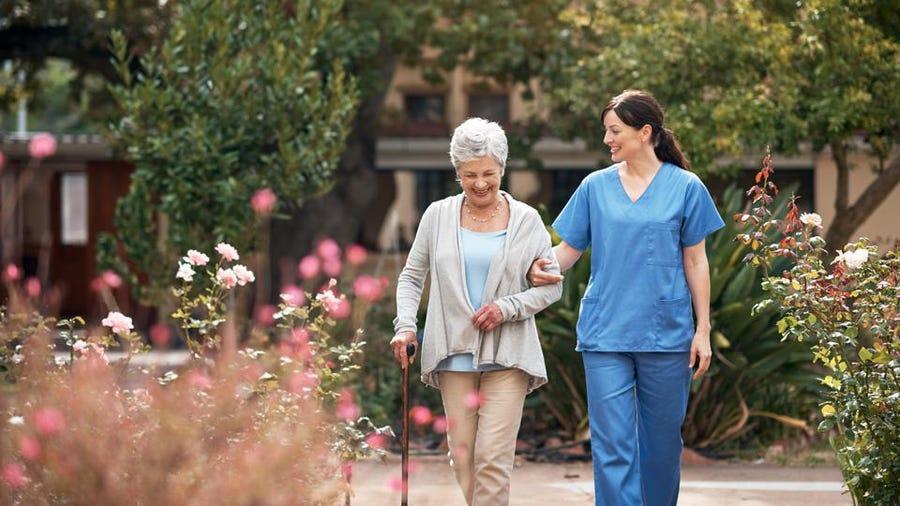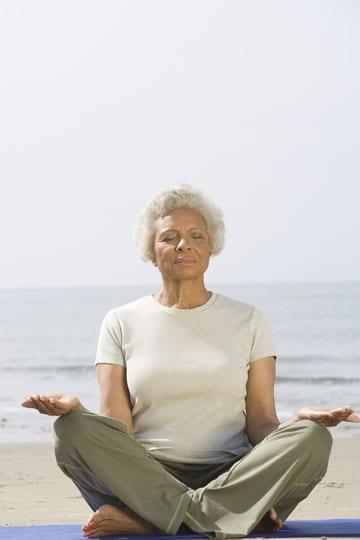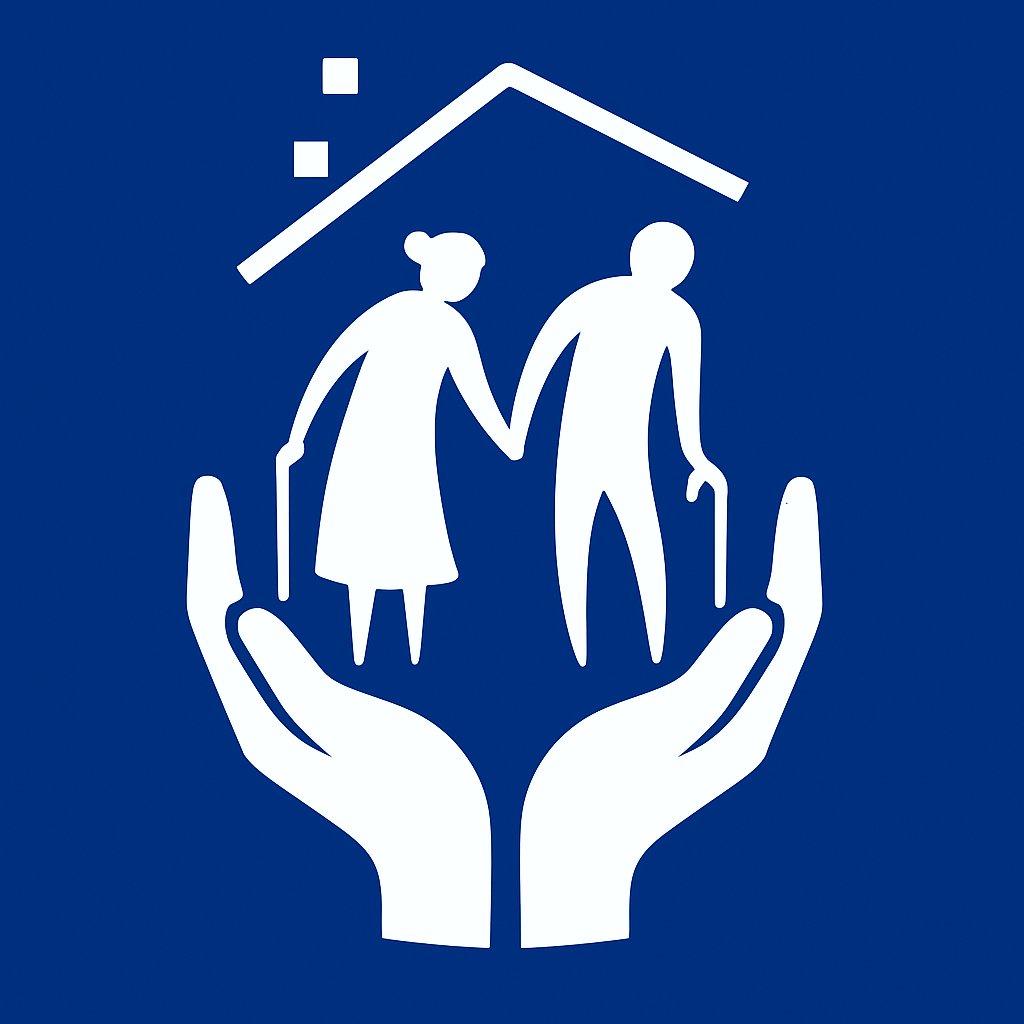Creating a Homelike Environment in Saskatoon Care Homes

Creating a Homelike Environment in Care Homes Moving to a care home can be a significant life change for seniors, and it can be challenging to adjust to a new environment. Care homes can often feel institutional, with clinical-looking rooms and common areas that lack personality and warmth. However, creating a homelike environment can help to make care homes feel more welcoming and comfortable for seniors. In this blog post, we’ll explore some ways that care homes in Saskatoon can create a homelike environment for their residents. Personalize Spaces One of the most significant ways to create a homelike environment in care homes is to personalize resident spaces. Residents should be encouraged to bring in their own furnishings, such as photos, artwork, and blankets. Personalizing their space helps residents feel more comfortable and less like they are living in a sterile, institutional environment. Care homes can also provide residents with the opportunity to decorate their rooms, so they feel like they have control over their environment. Create Common Areas Care homes can create common areas that feel like a cozy living room or family room. These areas can be decorated with comfortable furniture, soft lighting, and homey decor. Common areas can also be equipped with televisions, board games, and other forms of entertainment. Creating spaces where residents can socialize with each other or with family members can help to create a sense of community and belonging. Provide Access to Nature Access to nature can be beneficial to seniors’ physical and mental health. Care homes can create outdoor spaces such as gardens or courtyards where residents can spend time outside. Indoor spaces can also be decorated with plants or nature-themed artwork to bring the outdoors inside. Access to natural light and fresh air can help to improve residents’ mood and well-being. Encourage Participation in Activities Participation in activities can help to create a sense of purpose and meaning for seniors living in care homes. Care homes can offer a variety of activities, such as music programs, art classes, or exercise classes. These activities can help residents stay engaged and active and provide opportunities for socialization with other residents and staff members. Offer Choice and Flexibility Offering choice and flexibility is an essential aspect of creating a homelike environment. Care homes can offer flexible meal options, so residents can choose what they want to eat and when they want to eat. Providing a choice of activities and entertainment options can also help to create a sense of autonomy and control for residents. Train Staff Members Creating a homelike environment is not just about the physical space but also about the interactions between residents and staff members. Care homes can train staff members to provide person-centered care, which involves understanding and respecting each resident’s unique preferences and needs. Staff members should be encouraged to develop relationships with residents and create a warm and welcoming environment. In conclusion, creating a homelike environment in care homes is essential for improving residents’ quality of life. Personalizing resident spaces, creating comfortable common areas, providing access to nature, encouraging participation in activities, offering choice and flexibility, and training staff members can all help to create a warm and welcoming environment. By creating a homelike environment, care homes can help residents feel more comfortable, connected, and valued.
Managing Medications Safely and Effectively

Managing Medications Safely and Effectively Managing medications in care homes can be a challenging task. The residents of these homes are often older adults with multiple health conditions and complex medication regimens. Caregivers in Saskatoon care homes must ensure that residents take their medications safely and effectively. In this article, we will discuss some tips on how to manage medications safely and effectively in Saskatoon care homes. Develop a Comprehensive Medication Management Plan The first step in managing medications in care homes is to develop a comprehensive medication management plan. This plan should be individualized for each resident and should include information such as the medications the resident is taking, the dosages, and the frequency of administration. The plan should also include any potential drug interactions or side effects, as well as any necessary monitoring. Follow Medication Administration Guidelines Once a medication management plan is in place, it is important to follow medication administration guidelines. This includes adhering to the prescribed dosages and schedules, administering medications at the appropriate times, and monitoring for any potential side effects or adverse reactions. Keep Accurate Medication Records It is essential to keep accurate medication records in care homes. This includes keeping track of when medications were administered, the dosage, and any potential side effects or adverse reactions. This information can help caregivers to monitor residents’ medication regimens and ensure that they are taking their medications safely and effectively. Store Medications Properly Proper medication storage is critical in care homes. Medications should be stored in a secure location, out of reach of residents who may accidentally take the wrong medication or overdose. It is also important to store medications at the appropriate temperature and to regularly check expiration dates. Educate Residents and Caregivers Education is key to managing medications safely and effectively in care homes. Caregivers should receive comprehensive training on medication administration and management, as well as any potential side effects or adverse reactions. Residents should also receive education on their medications, including what they are taking, why they are taking it, and any potential side effects or interactions. Work with Pharmacists and Healthcare Providers Pharmacists and healthcare providers can be valuable resources for managing medications in care homes. They can provide information on drug interactions and side effects, as well as offer guidance on medication management and administration. It is important to maintain regular communication with these professionals to ensure that residents are receiving the best possible care. In conclusion, managing medications in care homes requires careful planning and attention to detail. Caregivers in Saskatoon care homes must ensure that residents take their medications safely and effectively. By following medication administration guidelines, keeping accurate medication records, storing medications properly, educating residents and caregivers, and working with pharmacists and healthcare providers, caregivers can help to ensure that residents receive the best possible care.
Meeting the Cultural and Religious Needs of Residents
Meeting the Cultural and Religious Needs of Residents Care homes in Saskatoon provide long-term care to residents who have unique cultural and religious needs. Meeting these needs is important to ensure that residents are comfortable, happy, and feel valued. In this blog, we will discuss the various ways in which care homes in Saskatoon meet the cultural and religious needs of their residents. Staff Training Care homes in Saskatoon provide their staff with training on cultural and religious diversity to ensure that they are sensitive to the unique needs of residents. This training includes information on different cultural and religious practices, beliefs, and customs. It helps staff members to understand and respect the cultural and religious differences of residents. Dietary Requirements Food is an important aspect of cultural and religious identity. Care homes in Saskatoon provide residents with culturally appropriate and religiously compliant meals. This includes vegetarian and halal options, and meals that meet specific dietary requirements for certain religious holidays. Prayer and Worship Spaces Care homes in Saskatoon provide residents with spaces for prayer and worship. These spaces are designed to accommodate different religious practices and can be used for private or communal worship. They are also equipped with religious items such as prayer mats, Bibles, Qurans, and other religious texts. Multicultural Activities Care homes in Saskatoon organize multicultural activities that celebrate the diversity of their residents. These activities include cultural festivals, dances, music performances, and other events that promote cultural awareness and respect. These activities provide residents with the opportunity to connect with their cultural roots and share their traditions with others. Language Services Language barriers can be a significant challenge for residents who are not fluent in English. Care homes in Saskatoon provide language services to help residents communicate effectively with staff members and other residents. This includes interpreters, translated materials, and staff members who speak multiple languages. Respect for Religious Beliefs Care homes in Saskatoon respect the religious beliefs of their residents and provide accommodations accordingly. For example, residents who observe a Sabbath or other religious holiday may need to avoid certain activities or tasks during that time. Care homes in Saskatoon provide residents with the necessary accommodations to observe their religious beliefs. Cultural Decor and Artifacts Care homes in Saskatoon decorate their facilities with cultural decor and artifacts that reflect the diversity of their residents. These decorations help residents feel at home and provide a welcoming and inclusive environment. Care homes also provide residents with culturally appropriate clothing, bedding, and other items to help them feel more comfortable and connected to their culture. care homes in Saskatoon take great care in meeting the cultural and religious needs of their residents. By providing staff training, dietary requirements, prayer and worship spaces, multicultural activities, language services, respect for religious beliefs, and cultural decor and artifacts, care homes create an inclusive and welcoming environment for all residents. Meeting the cultural and religious needs of residents helps to ensure that they are comfortable, happy, and feel valued in their care home.
The Importance of Regular Family Visits in Care Homes

The Importance of Regular Family Visits in Care Homes As the population ages, more and more families are faced with the decision of placing a loved one in a care home. While care homes provide essential support and care for seniors, they can also be isolating and lonely. Regular family visits are crucial in maintaining a connection between seniors and their loved ones and improving their quality of life. One of the most significant benefits of regular family visits is the emotional support they provide. Seniors living in care homes can feel isolated and lonely, and regular visits from family members can help to alleviate these feelings. Family visits provide seniors with an opportunity to connect with loved ones, share stories, and receive emotional support. Regular visits can also help to improve the mental health of seniors, reducing the risk of depression and anxiety. Regular family visits can also help to maintain a sense of normalcy and routine for seniors. Moving to a care home can be a significant life change, and maintaining familiar routines can help to reduce stress and anxiety. Family visits can provide a sense of familiarity and routine, helping seniors to feel more comfortable and settled in their new environment. Family visits can also play an essential role in maintaining physical health. Care homes provide essential medical care and support, but family members can also help to supplement this care. Family members can help to ensure that seniors are getting enough exercise, eating well, and taking any necessary medications. They can also provide additional support, such as helping with mobility or providing assistance with daily tasks. Regular family visits can also help to prevent elder abuse and neglect. Seniors who are isolated and have limited contact with family members are at a higher risk of experiencing abuse or neglect. Family members who visit regularly can help to identify any signs of abuse or neglect and report them to the appropriate authorities. Finally, regular family visits are essential in maintaining a sense of dignity and respect for seniors. Seniors who live in care homes can feel as though they have lost their independence and autonomy. Regular family visits can help to reinforce the idea that seniors are still valued members of their families and communities. It can also help to ensure that seniors are treated with respect and dignity by care home staff members. In conclusion, regular family visits are crucial in maintaining a connection between seniors and their loved ones and improving their quality of life. Family visits provide emotional support, help to maintain a sense of normalcy and routine, and can play an essential role in maintaining physical health. Regular family visits can also help to prevent elder abuse and neglect and maintain a sense of dignity and respect for seniors. While care homes provide essential support and care for seniors, regular family visits are crucial in ensuring that seniors continue to feel connected to their families and communities.
Supporting Residents with Hearing and Vision Loss

Supporting Residents with Hearing and Vision Loss As we age, it is common for our senses to decline, including our hearing and vision. For seniors living in care homes in Saskatoon, hearing and vision loss can be a major challenge that affects their quality of life. Fortunately, there are many ways care homes can support residents with hearing and vision loss to help them stay engaged and connected to the world around them. Here are some strategies care homes in Saskatoon can use to support residents with hearing and vision loss: Assess the resident’s needs: The first step in supporting residents with hearing and vision loss is to assess their individual needs. Care homes can work with the resident’s family and healthcare professionals to determine what accommodations and assistance the resident needs to maintain their independence and quality of life. Provide hearing and vision aids: Care homes can provide residents with hearing aids, eyeglasses, and other vision and hearing aids as needed. Staff should make sure that the aids are properly fitted and maintained so that residents can use them effectively. Ensure good lighting: Good lighting is essential for residents with vision loss. Care homes should ensure that common areas and individual rooms are well lit, and that the lighting is appropriate for residents’ needs. For example, residents with macular degeneration may need brighter lighting than those with other types of vision loss. Use visual cues: Visual cues can help residents with hearing loss understand what is happening around them. Care homes can use visual cues such as hand signals, facial expressions, and written notes to help residents understand what others are saying. Communicate effectively: Communication is key when supporting residents with hearing and vision loss. Staff should speak clearly and slowly, facing the resident and avoiding covering their mouth. Care homes can also provide staff with training on how to communicate effectively with residents who have hearing and vision loss. Provide social activities: Social activities can help residents with hearing and vision loss stay engaged and connected. Care homes can provide activities such as music therapy, art classes, and social events that are designed to be accessible for residents with hearing and vision loss. Offer assistive technology: There are many assistive technologies available that can help residents with hearing and vision loss stay connected and engaged. Care homes can provide residents with devices such as amplifiers, closed-captioning televisions, and large-print books to help them maintain their independence. Train staff: Staff should receive training on how to support residents with hearing and vision loss. This can include training on how to communicate effectively, how to use assistive technology, and how to provide appropriate accommodations. Supporting residents with hearing and vision loss is essential for maintaining their quality of life. Care homes in Saskatoon can use these strategies to help residents with hearing and vision loss stay engaged, connected, and independent. By working with residents, families, and healthcare professionals, care homes can create an environment that is supportive and inclusive for all residents, regardless of their sensory abilities.
Caring for the Caregivers: Support for Staff in Care Homes
Caring for the Caregivers: Support for Staff in Care Homes Caring for the elderly and those in need of long-term care is a challenging task that requires dedicated and compassionate caregivers. Caregivers in Saskatoon care homes work tirelessly to ensure that their residents receive the best possible care. However, caregiving can be emotionally and physically demanding, and caregivers may experience burnout or compassion fatigue. To ensure that caregivers are able to provide the best care possible, it is important to provide them with the support they need. In this blog, we will discuss the various support programs and resources available to caregivers in Saskatoon care homes. Employee Assistance Programs (EAP) Employee Assistance Programs are a confidential counseling service provided to employees who are experiencing personal or work-related problems. Care homes in Saskatoon offer EAPs to their staff, which include counseling services, referral services, and support for work-related stress. Support Groups Caregiving can be a stressful and emotionally draining job, and caregivers need a safe space to discuss their experiences and feelings. Support groups provide a supportive environment where caregivers can share their challenges and receive emotional support from their peers. Care homes in Saskatoon have support groups for their staff, which provide a forum for discussion and support. Training and Education Continuing education and training are important for caregivers to keep their skills and knowledge up to date. Care homes in Saskatoon provide their staff with regular training sessions on topics such as dementia care, communication skills, and infection control. These training sessions help caregivers to provide better care and improve their job satisfaction. Flexibility in Scheduling Caregivers often have demanding schedules that can impact their personal lives. Care homes in Saskatoon offer flexible scheduling options, which can include part-time or flexible hours, to help their staff achieve a better work-life balance. Health and Wellness Programs Caregivers in Saskatoon care homes are often exposed to physically and emotionally demanding situations, which can have a negative impact on their health. Health and wellness programs such as exercise classes, healthy food options, and stress management workshops are offered to caregivers to help them maintain their physical and mental health. Recognition and Appreciation Programs Caregivers are an essential part of the care home team, and their hard work and dedication should be recognized and appreciated. Care homes in Saskatoon have recognition and appreciation programs in place, which include bonuses, awards, and public recognition for staff who go above and beyond in their work. In conclusion, caregivers in Saskatoon care homes play an important role in providing care and support to the elderly and those in need of long-term care. Caregiving can be a challenging job, and it is important to provide caregivers with the support they need to do their job effectively. Care homes in Saskatoon offer a variety of support programs and resources to their staff, which include counseling services, support groups, training and education, flexibility in scheduling, health and wellness programs, and recognition and appreciation programs. These programs help caregivers to maintain their physical and mental health, improve their job satisfaction, and provide the best possible care to their residents.
Promoting Spiritual Well-being in Care Homes: A Guide

Promoting Spiritual Well-being in Care Homes: A Guide For residents in care homes, spiritual well-being is an important aspect of their overall health and quality of life. It’s the sense of meaning and purpose that can give residents a sense of hope, comfort, and connection. In this blog, we will discuss some ways that care homes can promote spiritual well-being among their residents. Create a Welcoming Environment: Care homes can create a welcoming environment by providing spaces where residents can express their spirituality. For example, creating a quiet room with comfortable seating and natural lighting can be a place for residents to reflect, pray or meditate. Care homes can also decorate the space with symbols or artwork that represent different spiritual traditions. Encourage Residents to Connect with Their Beliefs: Care homes can encourage residents to connect with their beliefs by facilitating religious services and spiritual practices. This can include having a chaplain or spiritual leader visit the care home regularly to lead services or provide pastoral care. Care homes can also provide access to religious texts and resources, such as Bibles or prayer books, and encourage residents to participate in spiritual practices that are meaningful to them. Provide Opportunities for Social Connection: Spiritual well-being is not only about individual practices, but also about connecting with others. Care homes can create opportunities for residents to connect with each other and build a sense of community. This can include group activities such as hymn singing or meditation sessions, as well as social events that celebrate different religious traditions. Be Mindful of Cultural Differences: It’s important for care homes to be mindful of the cultural and religious differences of their residents. This includes respecting their beliefs, values, and practices, and providing resources that are inclusive and accommodating. Care homes can work with residents and their families to understand their needs and preferences, and adjust their practices accordingly. Foster Meaningful Relationships with Staff: The relationships between staff and residents in care homes can also have an impact on spiritual well-being. Care homes can foster meaningful relationships by promoting a culture of empathy and respect. Staff can take the time to listen to residents, understand their needs and preferences, and provide emotional support. This can help residents feel valued and connected to others, which can contribute to their overall spiritual well-being. In conclusion, promoting spiritual well-being in care homes is about creating an environment that supports residents’ beliefs and values, and providing opportunities for social connection and meaningful relationships. By being mindful of cultural differences and fostering a culture of empathy and respect, care homes can help residents maintain a sense of meaning and purpose in their lives.
Enhancing Safety and Security: The Role of Technology

Enhancing Safety and Security: The Role of Technology Police checking camera. As the population ages, care homes and long-term care facilities are becoming increasingly important in providing essential support to seniors. While care homes are designed to provide residents with a safe and secure environment, there are always potential risks that could compromise their safety. Fortunately, technology is playing an increasingly important role in enhancing the safety and security of care homes in Saskatoon. One of the most significant challenges for care homes is ensuring that residents are safe from falls. Falls are the leading cause of injury among seniors, and can result in serious health complications. To mitigate this risk, care homes are implementing technology such as wearable devices, fall detection sensors, and monitoring systems. Wearable devices are small sensors that can be attached to clothing or worn as a bracelet or necklace. These devices can detect falls and alert staff members or emergency services. Fall detection sensors are placed in high-risk areas and can detect when someone has fallen and alert staff. Monitoring systems use cameras and sensors to detect falls or other potential risks, and alert staff members or emergency services. Another important aspect of safety and security in care homes is medication management. Seniors often take multiple medications, which can be confusing and difficult to manage. To address this challenge, care homes are implementing technology such as medication dispensing systems and electronic health records. Medication dispensing systems are automated systems that dispense medications at the appropriate time, reducing the risk of medication errors. Electronic health records allow staff members to access and update a resident’s medication information and history in real-time. Security is also a concern in care homes, as residents are vulnerable to theft and other forms of exploitation. To ensure the safety and security of residents, care homes are implementing security measures such as surveillance cameras, access control systems, and emergency response systems. Surveillance cameras can deter theft and other criminal activities and provide evidence in the event of an incident. Access control systems limit access to certain areas of the facility and ensure that only authorized personnel are allowed in. Emergency response systems allow residents to call for help quickly in the event of an emergency. Finally, technology is also being used to enhance the quality of life for residents in care homes. Interactive technology such as tablets and virtual reality systems can provide entertainment and cognitive stimulation. Smart home technology such as smart lighting and temperature control can improve comfort and convenience. In conclusion, technology is playing an increasingly important role in enhancing the safety and security of care homes in Saskatoon. From fall detection sensors to medication management systems, care homes are using technology to reduce risks and improve the quality of life for residents. As technology continues to evolve, we can expect to see even more innovative solutions that will further enhance the safety and security of care homes.
Maintaining Physical Health: Exercise and Movement in Saskatoon Care Homes

Exercising and Movement Lady exercising Maintaining physical health is crucial for individuals of all ages, but it is especially important for seniors residing in care homes. Exercise and movement play a vital role in improving the physical health of seniors, increasing their mobility, and promoting their overall well-being. This blog post will explore the importance of exercise and movement in care homes in Saskatoon and provide tips on how to maintain physical health for seniors. Importance of Exercise and Movement in Care Homes Exercise and movement are essential for seniors living in care homes as they can help to maintain and improve their physical health. Regular physical activity can help to reduce the risk of falls, maintain bone density, improve cardiovascular health, and promote mental health. Exercise and movement can also help to improve balance, coordination, flexibility, and mobility. In care homes, seniors may have limited opportunities to engage in physical activity due to their mobility issues or medical conditions. However, it is essential to encourage seniors to engage in some form of exercise or movement to promote their overall health and well-being. Tips for Maintaining Physical Health in Care Homes Encourage daily movement: Encouraging seniors to move their bodies daily can help to improve their physical health. Even simple movements like stretching or walking can be beneficial for seniors. Care home staff can provide seniors with gentle exercise routines or suggest activities like yoga, Tai Chi, or chair exercises. Focus on balance and flexibility: Balance and flexibility are crucial for seniors’ physical health. Care home staff can provide seniors with exercises that focus on balance and flexibility, such as chair yoga or balance training. Promote cardiovascular health: Cardiovascular health is important for seniors’ overall well-being. Care home staff can encourage seniors to engage in activities like walking, cycling, or swimming, which can help to improve cardiovascular health. Provide opportunities for socialization: Socialization is important for seniors’ mental health and well-being. Care home staff can provide opportunities for seniors to engage in group exercises or activities that promote socialization, such as dancing, game nights, or group walks. Create a safe environment: Safety is crucial for seniors’ physical health. Care home staff should ensure that the environment is safe for seniors to move around freely without any risk of injury. This can include installing handrails, non-slip mats, and adequate lighting in common areas. Encourage family involvement: Family involvement can be beneficial for seniors’ physical health. Care home staff can encourage family members to visit and engage in physical activities with their loved ones, such as going for walks or playing games. Conclusion Maintaining physical health is crucial for seniors residing in care homes in Saskatoon. Exercise and movement play a vital role in promoting physical health and well-being. Encouraging seniors to engage in daily movement, focusing on balance and flexibility, promoting cardiovascular health, providing opportunities for socialization, creating a safe environment, and encouraging family involvement are some ways to maintain physical health in care homes. Care home staff should work closely with healthcare professionals to develop exercise routines and activities that are safe and appropriate for seniors with various medical conditions. By promoting physical health and well-being in care homes, seniors can maintain their independence, improve their quality of life, and reduce their risk of health complications.
Enhancing Quality of Life: Activities and Programs
Enhancing Quality of Life: Activities and Programs People exercising and participating in activities A Guide On Enhancing Quality of Life Saskatchewan is a city that has number a of care homes that provide services to the elderly and those in need of long-term care. These care homes offer a variety of activities and programs that are aimed at enhancing the quality of life of their residents. In this blog, we will discuss some of these activities and programs. Physical activitiesPhysical activities are an important part of enhancing the quality of life of care home residents. Care homes in Saskatoon offer a variety of physical activities such as yoga, tai chi, and chair exercises. These activities not only improve physical health but also provide opportunities for social interaction and mental stimulation. Music and art therapyMusic and art therapy have been found to be effective in reducing stress and improving mental health. Care homes in Saskatoon offer these therapies to their residents to help them cope with anxiety, depression, and other mental health issues. Music therapy involves listening to music or playing instruments, while art therapy involves painting, drawing, or other forms of creative expression. Games and puzzlesGames and puzzles are not only fun but also beneficial for cognitive function. Care homes in Saskatoon offer a variety of games and puzzles such as bingo, trivia, and crosswords. These activities are a great way for residents to socialize, improve cognitive function, and keep their minds active. Pet therapyPet therapy involves interacting with animals to promote emotional, physical, and mental well-being. Care homes in Saskatoon offer pet therapy programs where residents can interact with trained therapy animals such as dogs and cats. These interactions have been found to reduce stress, lower blood pressure, and improve mood. GardeningGardening is a therapeutic activity that provides physical and mental benefits. Care homes in Saskatoon have gardens where residents can engage in gardening activities such as planting, watering, and harvesting. These activities provide opportunities for physical exercise, social interaction, and mental stimulation. Volunteer programsVolunteer programs provide residents with opportunities to give back to their community and feel a sense of purpose. Care homes in Saskatoon offer volunteer programs where residents can volunteer their time and skills to help others in need. These programs not only benefit the community but also provide residents with a sense of accomplishment and satisfaction. To conclude, care homes in Saskatoon offer a variety of activities and programs aimed at enhancing the quality of life of their residents. These activities and programs not only improve physical health but also provide opportunities for social interaction, mental stimulation, and emotional well-being. Care homes in Saskatoon are dedicated to providing their residents with a high quality of life and ensuring that they feel valued and respected.

